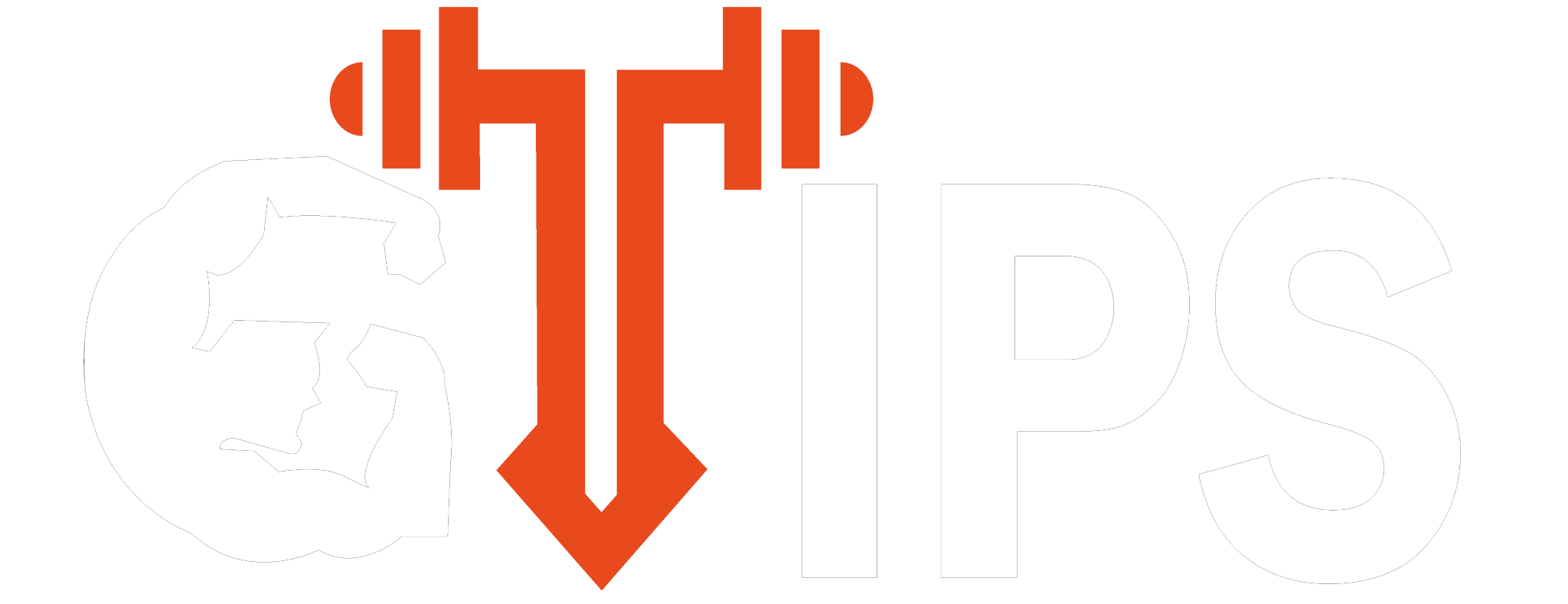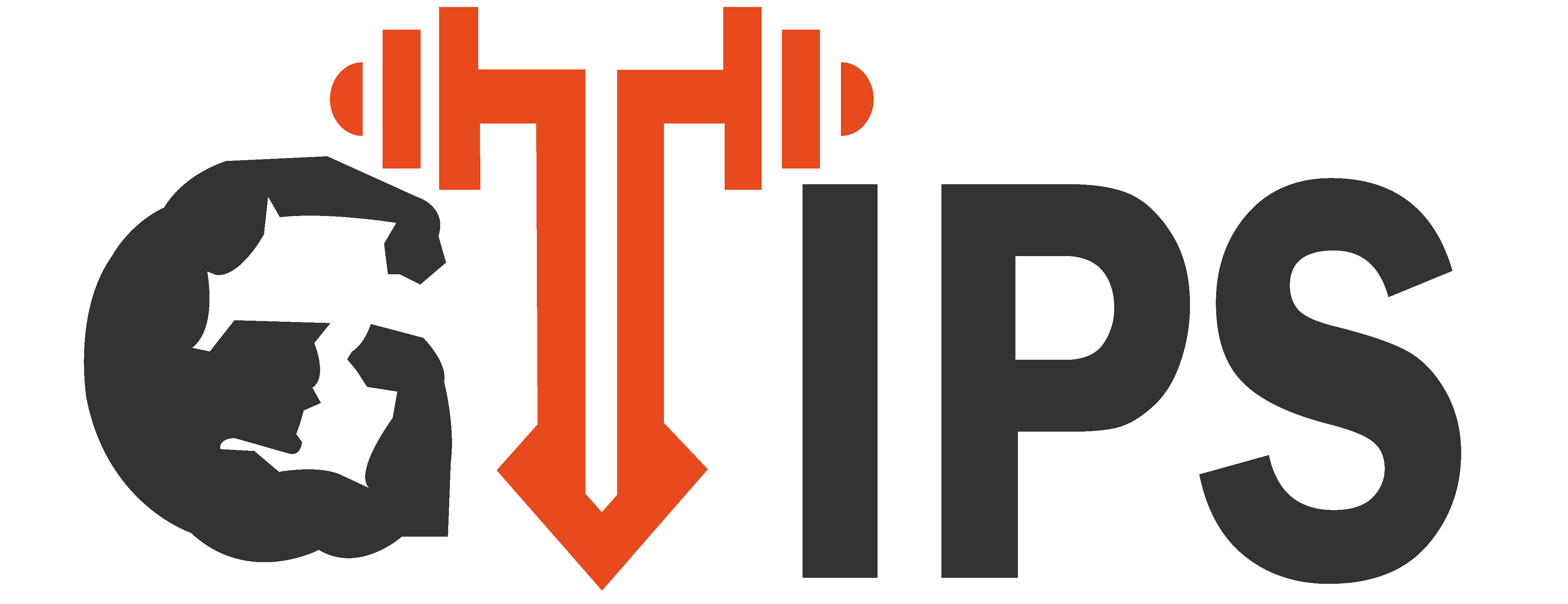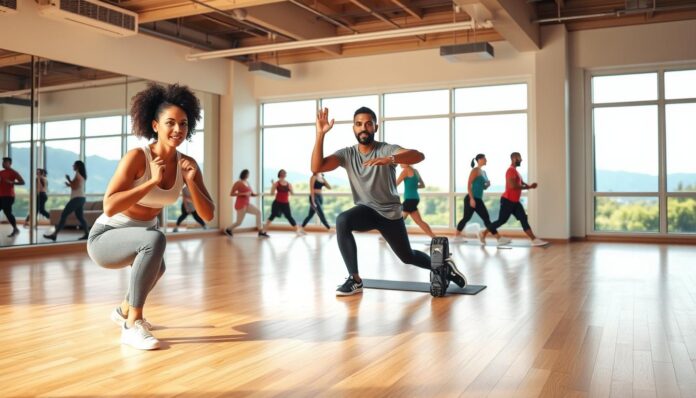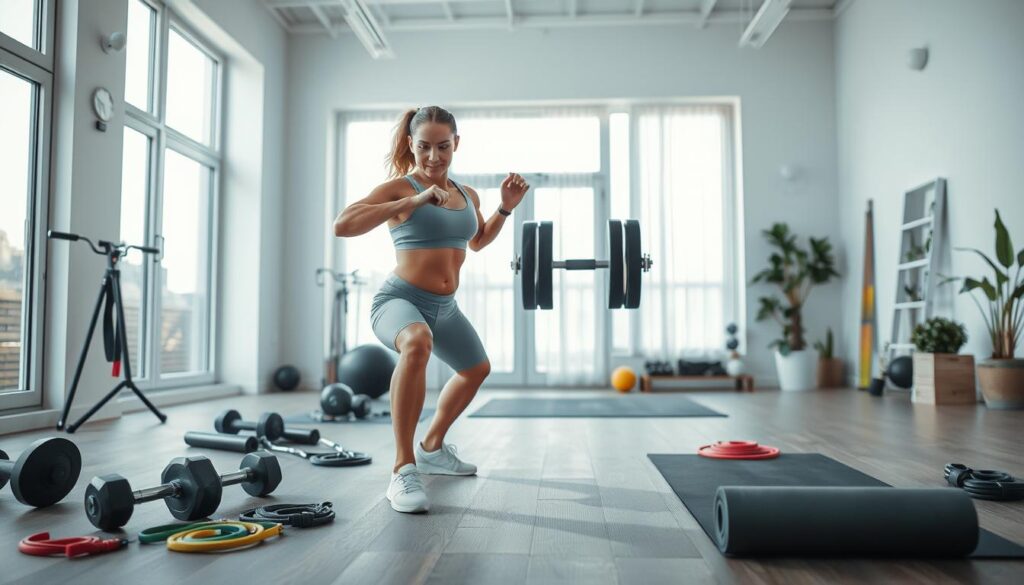Ever thought you could work out your whole body without going to the gym? The answer is yes! Full body exercises for beginners work on many muscles at once. They’re great for getting fit at home because they use your body weight as resistance. Plus, you can adjust how hard or easy they are, making them perfect for starting your fitness journey.
Studies show that doing a full body workout as a beginner can really boost your strength and endurance. Just a few minutes each day can help you build a regular exercise habit. To learn more about starting your fitness journey, check out this resource on home workout routines without equipment.
Remember, the secret to success is sticking with it and staying motivated. Let’s start this exciting fitness journey together and discover the power of full body workouts!
Key Takeaways
- Full body exercises allow you to work multiple muscle groups at once.
- You can effectively train at home without gym equipment.
- Consistency is essential for achieving your fitness goals.
- Beginner workouts can be easily adjusted to match your fitness level.
- Engaging in regular exercise improves overall strength and endurance.
Benefits of Full Body Workouts
Full body workouts bring many benefits for those looking to get fit. They work on many muscle groups at once, helping you build strength fast. These workouts also boost your endurance and energy.
Adding beginner strength training to your routine can make you feel happier and less stressed. It’s even good for your mental health, lowering anxiety and helping you sleep better. Plus, full body workouts burn more calories than split routines.
Full body workouts are great for beginners because they’re less scary and quick. You can do them in your daily routine without spending hours at the gym. They’re a smart choice for building strength, improving your mood, and reaching your fitness goals.
Getting Started with Full Body Exercises
To start with full body exercises, first check your current fitness level. Knowing this helps you set achievable goals for your workout. Choose simple exercises that you can do at home.
Begin with basic moves like squats, push-ups, and lunges. These work many muscles at once, making them great for a good workout. Make sure to work out at least three times a week to keep improving.
Start with easy exercises to build your confidence and get your body ready for harder ones later. Find a place where you feel good to work out, helping you get better slowly.
Stay committed to your workout routine, and you’ll see big improvements over time. Always celebrate your small wins, as they keep you motivated to keep going.
Essential Warm-Up Routines
Getting your body ready for a workout is key in any basic full body workout routine. A good warm-up reduces injury risk and boosts performance. Start with dynamic stretches that raise your heart rate and prepare your muscles for harder exercises.
Use simple movements to work on big muscle groups. Arm circles help your shoulders, while leg swings improve hip flexibility. Gentle torso twists also engage your core. Spend 5 to 10 minutes on these routines to smoothly move into your workout.
Full Body Exercises for Beginners
Starting your fitness journey can be thrilling and a bit scary. Focusing on easy full body exercises is a great way to begin. You won’t need much equipment or complicated moves. Here are five beginner strength training exercises to add to your routine.
Bridge
The bridge exercise strengthens your glutes and core. Lie on your back with knees bent and feet flat. Lift your hips up until your body is straight from shoulders to knees. Hold for a second, then go back down.
Chair Squat
This exercise is like sitting in a chair. Stand in front of a chair with your feet apart. Bend your knees to lower down, keeping your back straight. Lightly touch the chair with your buttocks before standing up. It helps build leg strength and stability.
Knee Pushup
The knee pushup is a beginner-friendly version of a pushup. Start on your hands and knees. Lower your chest towards the ground and push back up. It works your chest, shoulders, and triceps without too much strain.
Stationary Lunge
The stationary lunge is great for strengthening your lower body. Stand up and take a step forward with one foot. Lower your hips until your knees are at a 90-degree angle. Push back up and switch legs. It improves balance and leg strength.
Plank to Downward Dog
This exercise boosts your core strength and flexibility. Start in a plank position, then lift your hips to downward dog. Switch between these positions to work many muscles and stretch nicely.
Creating a Beginner Full Body Workout Plan
Creating a plan for your beginner full body workout is essential. It helps you reach your fitness goals. Include exercises that work all major muscle groups. Aim for three workouts a week, each with different movements.
Start with basic exercises like squats, push-ups, and lunges. These are great for beginners working out at home. They let you grow as you get more comfortable.
A sample workout could include:
| Exercise | Sets | Reps |
|---|---|---|
| Squats | 3 | 10-12 |
| Push-Ups | 3 | 10-12 |
| Lunges | 3 | 10-12 |
| Planks | 3 | 30 seconds |
| Mountain Climbers | 3 | 10-15 |
Always warm up for 5-10 minutes before starting. This reduces injury risk. Resting between sets helps keep your form and improves performance. Each workout should last 35-40 minutes, including cool-down.
For more tips on structuring your workout, check out this full body workout at home guide. It offers insights to enhance your fitness journey.
Tips for Staying Motivated While Working Out at Home
Staying motivated at home can be tough. Setting clear goals helps you see how far you’ve come. Tracking your progress keeps you on track and proud of your achievements.
Working out with a friend or family member adds fun and social interaction. It turns workouts into a shared experience, boosting your motivation.
Change up your workouts to avoid boredom. Try new exercises or themed workout days. This keeps your workouts exciting and challenges your body.
Make a simple workout schedule for the week. A clear plan helps you stick to your routine. Regular easy full body exercises improve your daily mood.
Common Mistakes to Avoid
Many people starting a basic full body workout routine face several challenges. Knowing these mistakes can help you reach your fitness goals faster.
Poor form is a big issue for beginners. It’s more important to focus on how you do the exercises than how many you do. This way, you avoid injuries and improve your workout’s effectiveness.
Not warming up is another common mistake. A good warm-up gets your muscles and joints ready for exercise. It helps prevent injuries and boosts your workout performance.
Not giving your body enough rest is also a mistake. Not enough rest can make you tired, burn out, and make your workouts less effective. It’s important to listen to your body and take rest days.
Rushing through exercises can also be a problem. Taking your time to learn each exercise helps you progress slowly and safely. Learning the right form is key to a successful fitness journey.
How to Scale Exercises for Your Fitness Level
Scaling exercises for beginners is key to making progress without feeling overwhelmed. Start with a beginner total body workout and adjust movements based on your fitness level. For example, if doing push-ups, start on your knees or use a wall for support. Once you get stronger, move to regular push-ups for more of a challenge.
Scaling squats is also effective. Start with shallow squats or use your body weight. As you get stronger, deepen your squats and add weights if you want. This approach helps you build confidence and stay safe while making steady progress.
Here’s a table showing different scaling options for common exercises:
| Exercise | Beginner Modification | Intermediate Adjustment | Advanced Variation |
|---|---|---|---|
| Push-Up | Knees on the ground | Regular push-up | Decline push-up |
| Squat | Shallow squat | Deep squat with body weight | Weighted deep squat |
| Plank | Knees on the ground | Standard plank | Side plank |
| Lunge | Static lunge with support | Walking lunge | Weighted lunge |
Scaling exercises for your fitness level helps you make gradual improvements. This makes your workouts more enjoyable and sustainable.
Incorporating Low Impact Full Body Exercises
Low impact full body exercises are great for beginners or those with joint issues. They help build strength without hurting your body. You can get a full workout that boosts your fitness journey.
Modified Bodyweight Exercises
Modified bodyweight exercises are perfect for starting your fitness journey. They can be changed to fit your current level. For example, chair squats help you practice form without straining your knees.
Incline push-ups are another good choice. They’re done against a sturdy surface, making them easier than regular push-ups.
Alternatives for High-Intensity Movements
If high-intensity workouts are too tough, try low impact exercises instead. Swap high-impact jumps for step-ups or side lunges. These moves keep the workout intense but easier on your joints.
By using these alternatives, you can enjoy full body exercises that boost strength and endurance. Plus, they make sure your workouts are positive and safe.
Progressing to Advanced Full Body Workouts
Once you’ve mastered beginner exercises, it’s time to move up. Advanced full body workouts will boost your strength and endurance. Try doing more reps or sets to make your workouts harder.
For instance, switch from eight knee pushups to ten standard pushups. This will increase the challenge.
Adding weights is another way to progress. Use dumbbells or resistance bands for squats or lunges. This will help grow your muscles.
Try single-leg exercises like single-leg deadlifts. They require balance and coordination, making them great for your routine.
Plyometric movements, like jump squats or clap pushups, add explosive power. These workouts improve strength and heart health. Always focus on proper form and technique.
Listen to your body as you get better. Adjust your workouts based on how you feel and recover.
By making these changes, you’ll be on a path to better fitness. Stay motivated and keep pushing yourself for more.
Conclusion
Starting with full body exercises for beginners can lead to a healthier life. These workouts help you build strength and endurance. They also fit well into your daily routine without needing expensive gym equipment.
Being consistent is important in fitness. Basic movements help you track your progress and build a lasting habit. Every small win is important and keeps you motivated.
The goal is to become a healthier, fitter you. Celebrate your journey and the progress you make. With dedication and a positive attitude, you can change your routine and improve your well-being.
FAQ
What are full body exercises for beginners?
Full body exercises are workouts that work many muscles at once. They’re great for beginners because they don’t need special equipment. You can do them with just your body weight.
Why should I include full body workouts in my routine?
Full body workouts boost strength and endurance. They also increase energy and improve mood. Plus, they help with mental health, like reducing anxiety and better sleep.
How often should beginners do a full body workout?
Beginners should aim to work out at least three times a week. This helps keep a steady routine and progress.
What are some easy full body exercises I can do at home?
Easy exercises include squats, push-ups, lunges, bridges, and plank to downward dog. These work many muscles and can be done at home.
How do I warm up before starting my workout?
Start with dynamic stretches and mobility exercises. Do arm circles, leg swings, and torso twists for 5 to 10 minutes. This gets your body ready for exercise.
What mistakes should beginners avoid when doing full body workouts?
Avoid poor form, skipping warm-ups, not resting enough, and rushing. Focus on proper technique to avoid injuries.
How can I scale exercises to match my fitness level?
Modify push-ups by starting on your knees or against a wall. Progress to standard push-ups as you get stronger. Adjust squat depth and weight based on your fitness level.
What are low impact full body exercises?
Low impact exercises like chair squats and incline push-ups are good for beginners or those with joint issues. They work many muscles without the risk of injury.
When should I start introducing advanced movements?
Start introducing advanced movements after mastering beginner exercises. Increase reps, add weights, or try more complex variations. Make sure your form is correct.






